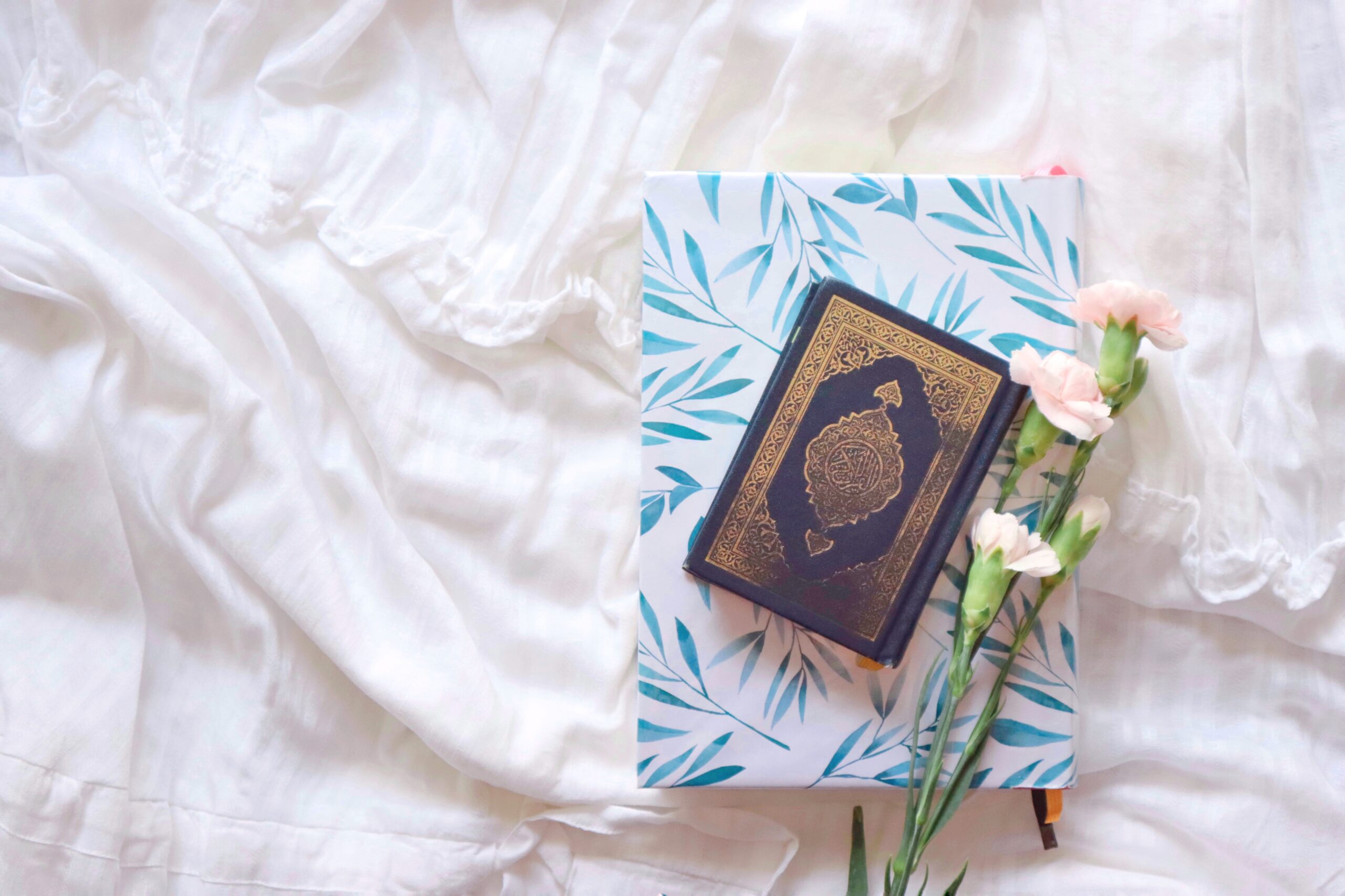A qiraa’ah is, for the most part, a method of pronunciation used in the recitations of the Qur’aan. These methods are different from the seven forms or modes (ahruf) in which the Qur’aan was revealed.
The seven modes were reduced to one, that of Quraysh, during the era of Caliph ‘Uthmaan when he ordered that the Qur’aan be copied in the Qurayshee dialect and distributed among the Islaamic centers of the time. Hence, only the Qurayshee mode remains today and all of the methods of recitation are based on this mode.
The various methods have all been traced back to the Prophet (ﷺ) through a number of the sahabah who were most noted for their Qur’aanic recitations. That is, these sahabah recited the Qur’an to the Prophet (ﷺ) or in his presence and received his approval.
Among them were the following: Ubayy ibn Ka‘b, ‘Ali ibn Abee Taalib, Zayd ibn Thaabit, Ibn Mas‘ood, Aboo ad-Dardaa’, and Aboo Moosaa al-Ash‘aaree. Many of the other sahabah learned from these masters. Ibn ‘Abbaas, the master commentator of the Qur’aan among the sahaabah, learned from both Ubayy and Zayd.
Among the next generation of Muslims, referred to as the taabi‘oon, there arose many scholars who learned the various methods of recitation from the sahaabah and taught them to others. Centers of Qur’aanic recitation developed in Madeenah, Makkah, Koofah, Basrah, and ash-Shaam (Greater Syria), leading to the evolution of Qur’aanic recitation into an independent science.
By the mid-eighth century CE, there existed a large number of outstanding scholars, all of whom were considered specialists in the field of recitation. Most of their methods of recitation were authenticated by chains of reliable narrators, ending with the Prophet (ﷺ). Those methods on each level of their chain were called mutawatir and were considered to be the most accurate.
Those methods in which the number of narrators was few or one on any level of the chain were referred to as shaath. However, some of the scholars of the following period began the practice of designating a set number of individual scholars from the previous period as being the most noteworthy and accurate reciters.
By the middle of the tenth century CE (6th century AH), it became a popular convention to limit the number of best reciters to seven, since this number coincided with the number of dialects in which the Qur’aan was revealed. Similarly, during this period the number of schools of Islaamic law (math-habs) were reduced to the famous four after a period in which there were many.
The first to limit the number of authentic reciters to seven was the ‘Iraaqi scholar, Aboo Bakr ibn Mujaahid (d. 936 CE), and those who wrote books on qiraa’ah after him followed suit. This limitation is not an accurate representation of the classical scholars of Qur’aanic recitation.
There were many others who were as good as the seven and a number who were greater than them. In fact, the classification of scholars was really a classification of how well their methods of recitation were preserved. Hence, the famous seven were those early scholars from different generations whose methods of recitation had the most chains of narrators with many narrations on each level of the chain.
However, there were other classical scholars whose methods of recitation were just as authentically (mutawaatir) recorded as the famous seven. A list of the ten scholars of Qur’aanic recitation whose methods were best preserved is as follows:
- Aboo ‘Amr ibn al-‘Alaa (d. 771 CE/154 AH) of Basrah
- Ibn Katheer (d. 738 CE/119 AH) was among the students of the sahaabah of Makkah.
- Naafi‘ (d. 786 CE/169 AH) was originally from Isfahaan, and his recitation, as transmitted by Warsh (d. 812 CE/196 AH), was of Madeenah.
- Ibn ‘Aamir (d. 737 CE/118 AH) was the chief judge (qaadi) of Damascus during the reign of al-Waleed ibn ‘Abdul Maalik, who, along with the other Umayyad caliphs, made that city his capital.
- ‘Aasim (d. 746 CE/128 AH) of Koofah was the narrator of the dominant recitation in current use. His narration, as transmitted by Hafs, is the most common method of narration used in the Muslim world today with the exception of Africa.
- Hamzah (d. 773 CE/156 AH) of Koofah.
- Al-Kisaa’ee (d. 805 CE/189 AH) of Koofah was one of the foremost grammarians. He played a major role in the formulation of Arabic grammar rules.
- Aboo Ja‘far (d. 750 CE/132 AH) of Madeenah.
- Ya‘qoob (d. 820 CE/204 AH) of Basrah. 10.Khalaf (d. 844 CE/229 AH) of Baghdaad.
At the same time that scholars of hadeeth laid down conditions to determine the authenticity of statements or actions attributed to the Prophet (ﷺ), scholars of Qur’aanic recitation also formulated conditions to facilitate critical analysis of the existing recitations. For any given recitation to be accepted as authentic (saheeh), it had to fulfill three conditions.
If any of the conditions were missing, such a recitation was classified as shaath (unusual). The first condition was that the recitation have an authentic chain of narration; that is, that the chain of narrators had to be unbroken, that the narrators were known to be righteous, and that they were known to possess good memories.
It was also required that the recitation be conveyed by a large number of narrators on each level of the chain of narration below the level of the sahaabah (the condition of tawaatur). Narrations that had authentic chains but lacked the condition of tawaatur were accepted as explanations (tafseer) of sahaabah, but were not considered as methods of reciting the Qur’aan. As for narrations that did not even have an authentic chain of narration, they were classified “ baatil” (false) and rejected totally.
The second condition was that the recitations’ variations match known Arabic grammatical constructions. Unusual constructions were verified by their existence in passages of pre-Islamic prose or poetry. The third condition required the recitation to coincide with the script of one of the copies of Qur’aan distributed during the era of Caliph ‘Uthmaan.
Hence, differences that result from dot placement (e.g. ta‘lamoon and ya‘lamoon) are considered acceptable, provided the other conditions are met. If no support for an unusual condition could be found, the recitation of that construction would be classified sheath.
This classification did not mean that all aspects of the recitation were considered shaath; in fact, none of the accepted ten methods are totally free from some shaath constructions. Shaath narrations of this type also serve as explanations for the authentic narrations, as they are obviously statements of the sahaabah.







Recent Comments